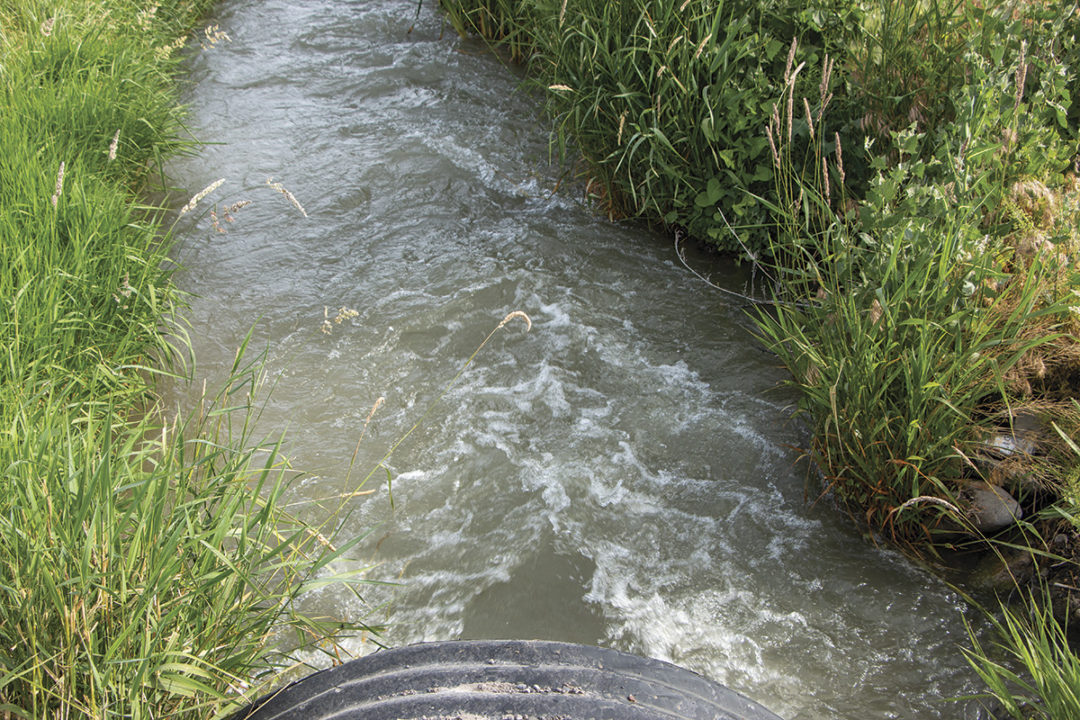The Idaho Supreme Court released two decisions in late October 2022, dealing with rights of ditch owners and operators in circumstances where ditches cross lands of another person. In the two unanimous decisions, the court explained and clarified the easement rights of ditch owners, and the ability of courts to intervene to restrain ditch users where they unnecessarily burden the lands over which the ditches cross.
One case arose out of the Cambridge, Idaho area – Hood v. Poorman, Anderson – while the other case was from the Challis, Idaho, area – Chester v. Wild Idaho Adventures. In each case, the lower courts imposed restraints on when, where and how the ditch user could conduct maintenance activities and required the ditch user to give advance notice to landowners before doing maintenance. The Idaho Supreme Court picked apart the lower court decisions in this regard, allowing some limits to remain while striking down others.
The easement rights of ditch owners are confirmed in Idaho law at Idaho Code section 42-1102. This statute confirms an easement, or right-of-way, for the ditch user. This is called the "primary easement." The primary easement allows a ditch user to convey water over land of another through a ditch, canal or conduit. This is a firm right, rooted in law, and cannot be limited by courts. The court can only define and fix the right in a judgment so the ditch path is clearly explained and recorded in real property records maintained by counties. The courts can define the character, location, width and length of the ditch.
There are certain rights and privileges that flow from the primary easement, and these are called the "secondary easement." The secondary easement includes rights of a ditch user to enter the land over which the ditch runs; to access the ditch; to maintain, inspect, operate, clean and repair the ditch; and to do so with necessary equipment and personnel. The secondary easement also includes the right to remove spoils from the ditch and to deposit them on the ditch banks. Importantly, the Idaho Supreme Court announced these activities are permitted during all seasons – and without prior notice to underlying landowners. The secondary easement thus encompasses a right of the ditch user to do all those things necessary to ensure the ditch can deliver the water to the ditch user in the quantity and at the times the ditch user is permitted to receive the water by law or right.
The secondary easement rights and activities are subject to a rule of reasonableness – it is not a right that just allows the ditch user to do anything he wishes upon the traversed land; what the ditch user does within the context of the secondary easement must be what is reasonably needed based on present circumstances. By way of example, in the cases at issue, the court determined removing trees some 100 feet away from the ditch was unreasonable, but explained that removing a culvert that impedes the flow to which the ditch user is entitled would be reasonable. The ditch user is constrained to minimize impact to the landowner, and to do only that which is necessary.
When a ditch user acts outside the bounds of reasonableness, the courts are permitted to restrain the ditch user by entry of a “permanent injunction.” Permanent injunctions are appropriate where the ditch user has done, or is threatening to do, something that is unreasonable and needlessly burdensome on an underlying landowner, and where the ditch user’s conduct will cause irreparable injury to the landowner if not prohibited. In judging whether a ditch user’s conduct is appropriate, the courts are to give reasonable deference to the ditch user because owners and operators of ditches have broad discretion to make their own maintenance decisions in light of the many duties and liabilities imposed on them under the law. Whether a ditch user’s conduct is reasonable is measured objectively, from evidence of those experienced in the field and from what the ditch user himself considered reasonable under the immediate circumstances.
In the cases before the court, certain permanent restrictions on the time, manner and method of maintenance were upheld where there was evidence the ditch user repeatedly made entry for purposes of harassment and annoyance to the landowner. But the court did not allow notice requirements (e.g., 72-hour notice before doing maintenance), emergency condition limits (e.g., no maintenance in summer unless an emergency) or time limit requirements (e.g., one week of maintenance each spring) to be imposed. In the Chester case, the lower court ruled spoils had to be removed from the ditch banks within a reasonable time. The Supreme Court overruled this, finding there was no evidence that depositing spoils on a ditch bank is unreasonable (at least in the circumstances the case presented).
These cases are instructive in that they clearly inform the water user community that all access to, maintenance and ditch activity on ditches that flow across lands of another must be limited to what is “reasonable” and "necessary” under current conditions. The ditch easement right is not a right to simply enter and travel across another person’s land at whim – access must always be ditch-related and minimally intrusive. Where a ditch user goes too far, courts are empowered to step in to permanently restrain unreasonable conduct which, if it then continues, can be punishable as contempt of court. Where a ditch user acts reasonably, courts will defer to the ditch user and afford deference and latitude in regard to maintenance activities.



.jpg?height=auto&t=1713304395&width=285)


